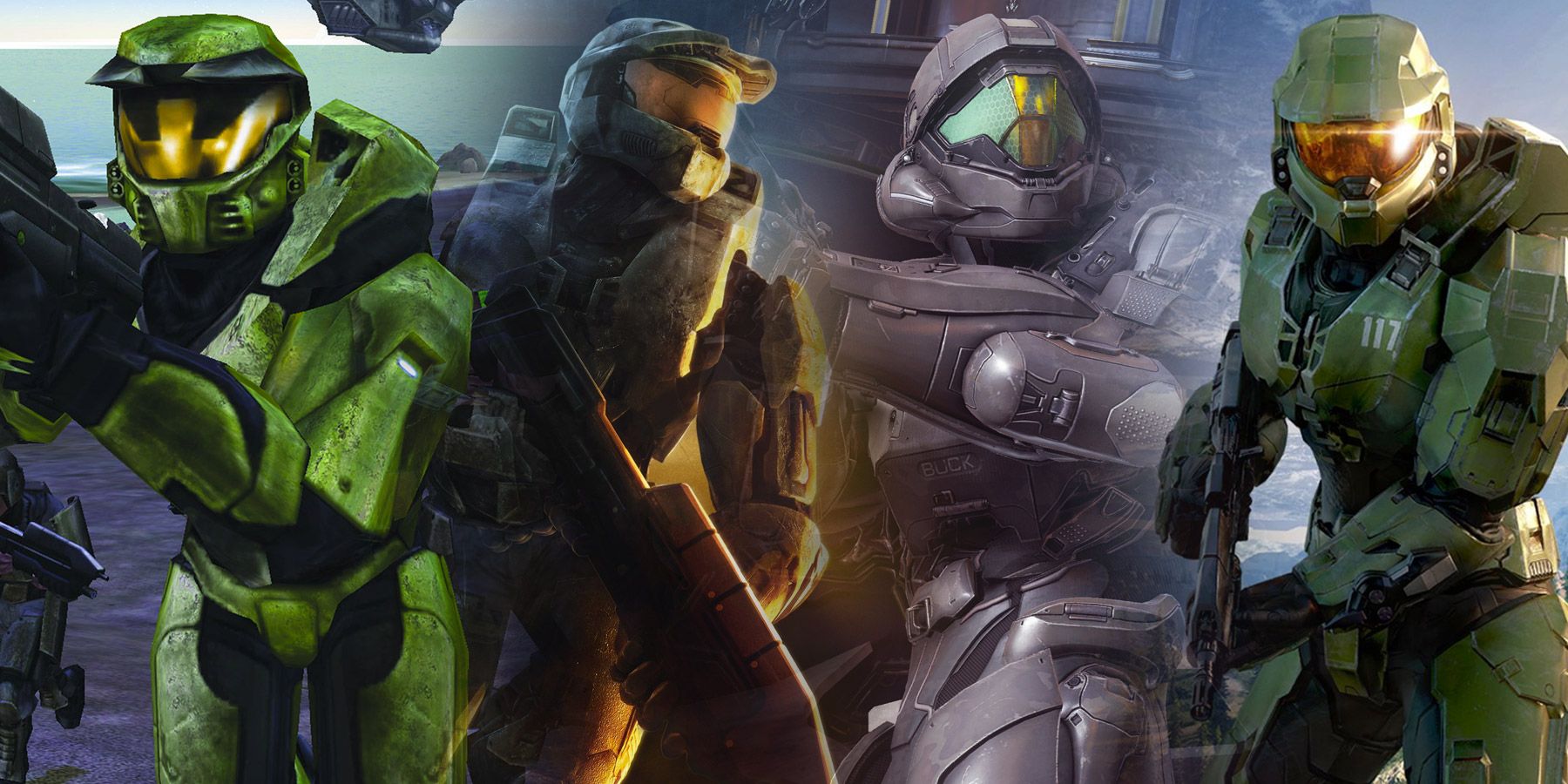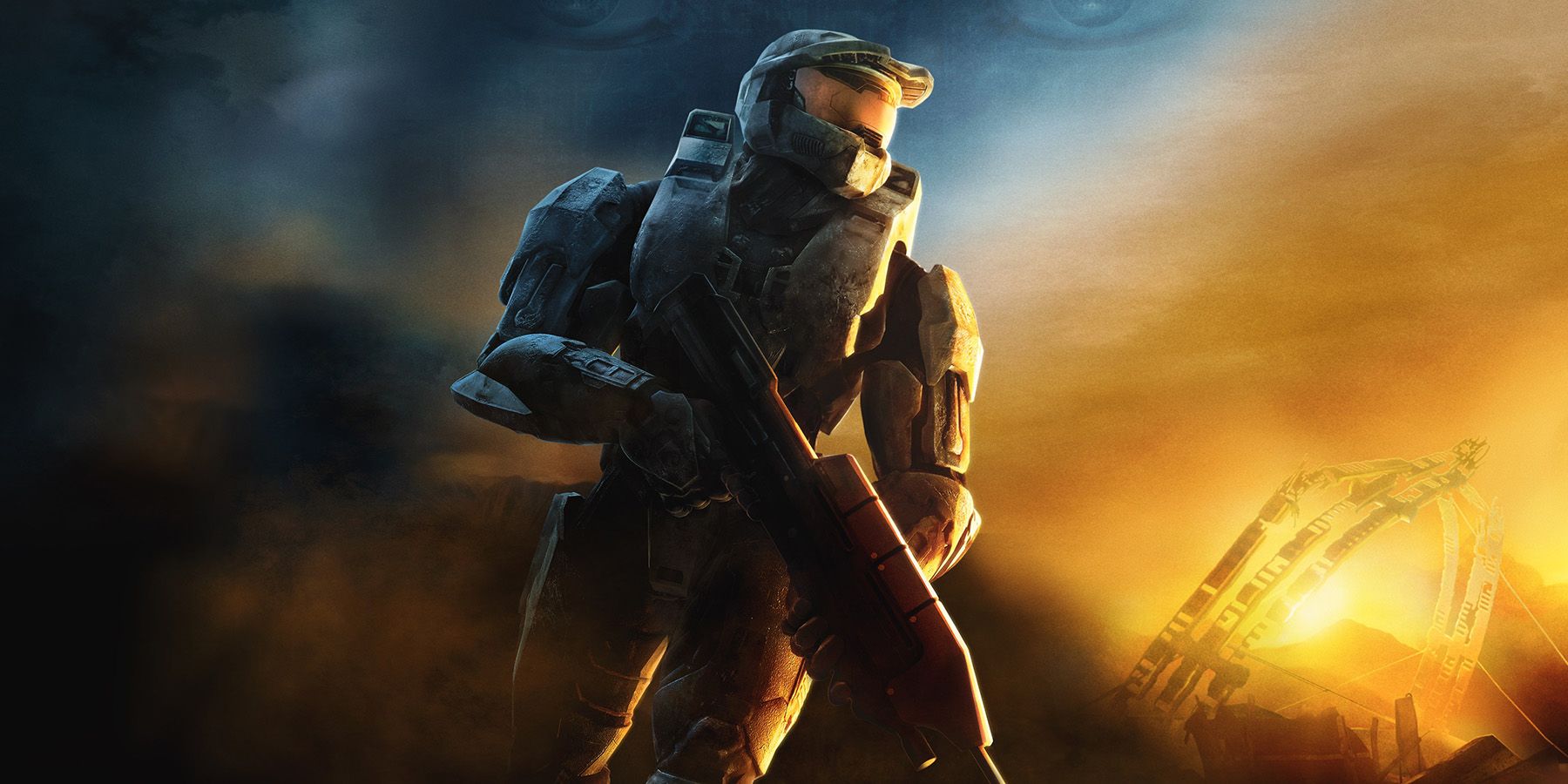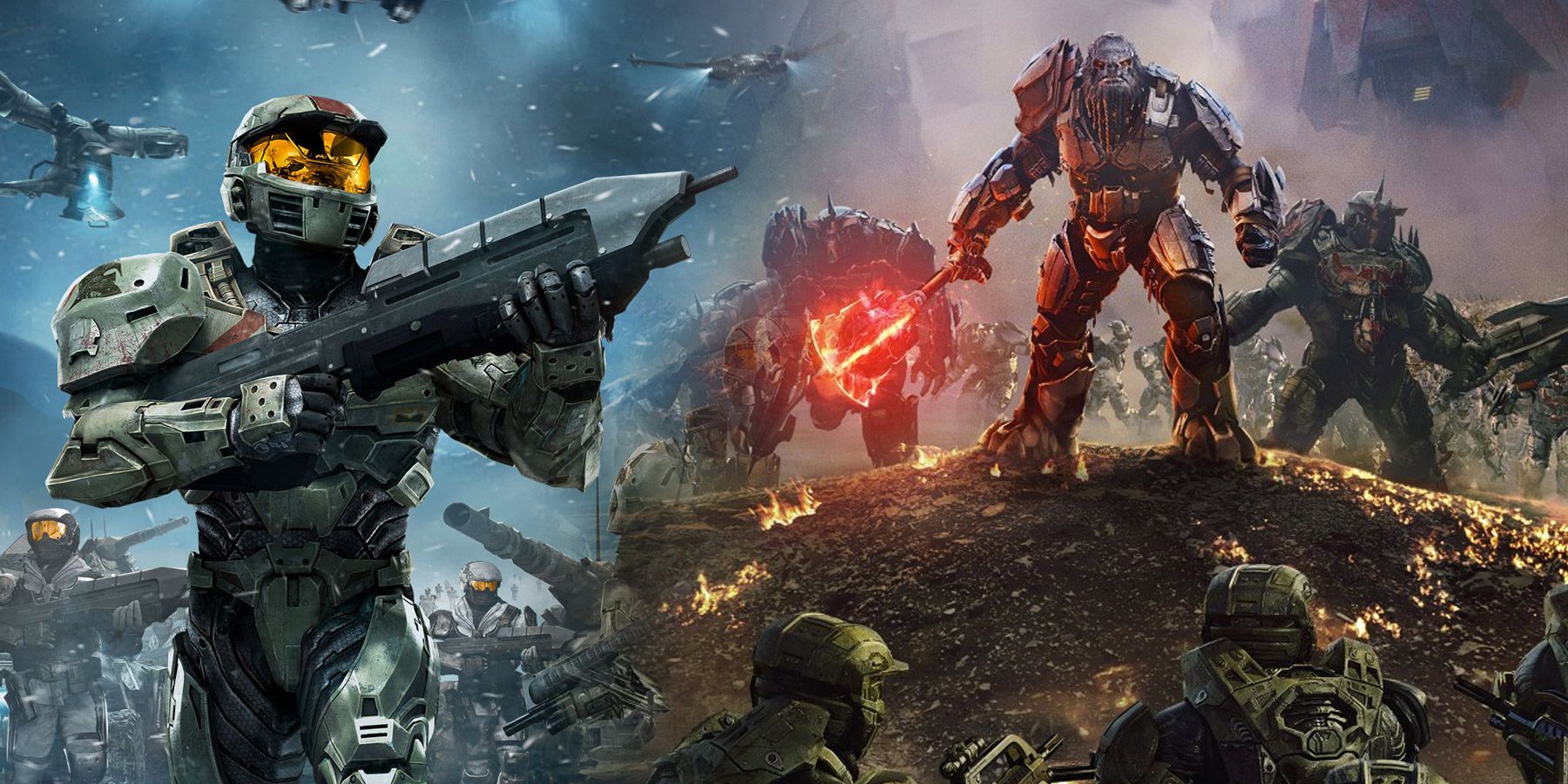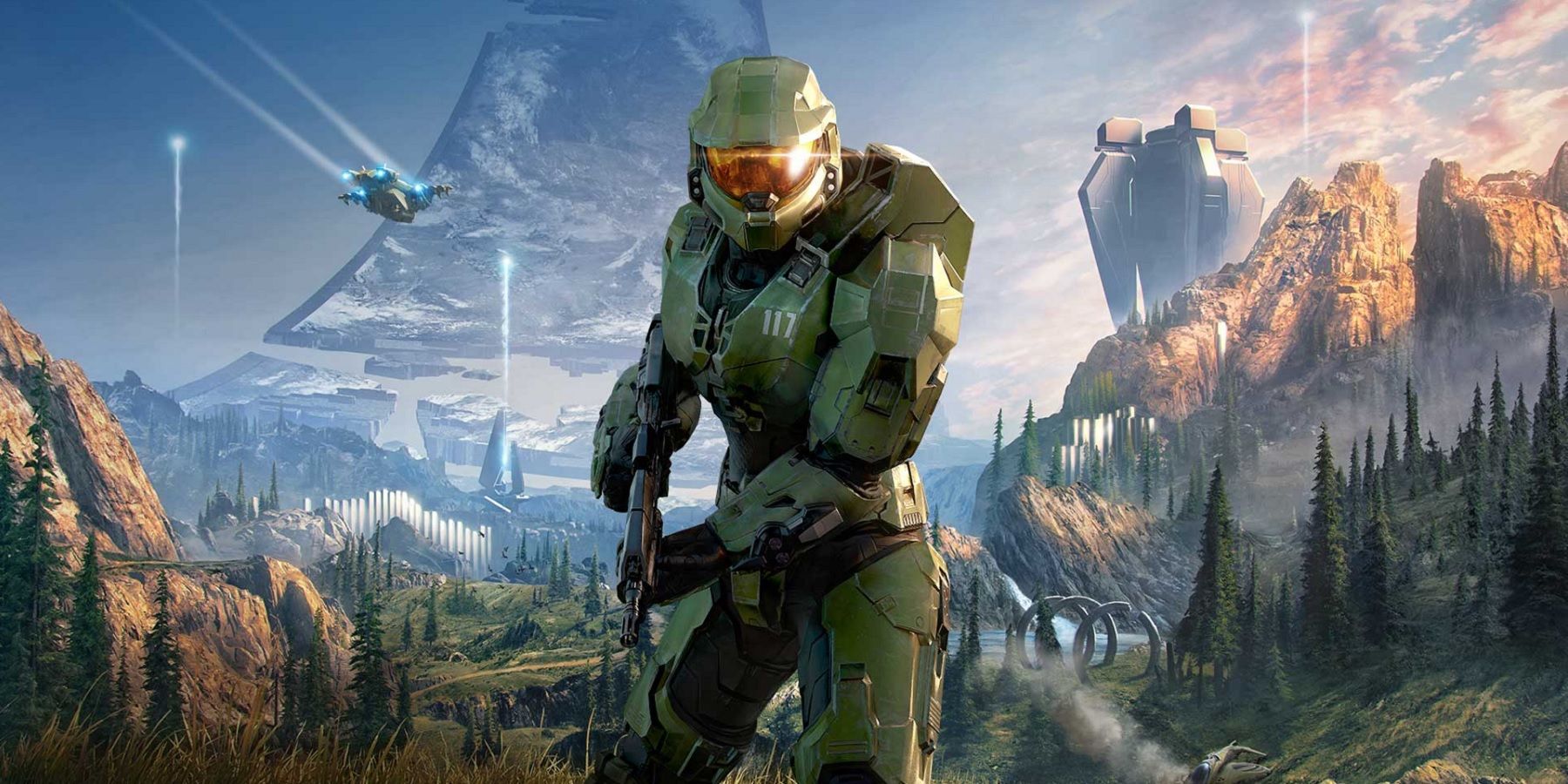The series that almost single-handedly made the Xbox a success, Halo is still regarded as one of the greatest Sci-Fi gaming franchises of all time. With a mainline series that sees the Spartan supersoldier John-117 - also known as Master Chief - defending Earth and the rest of humanity from alien Covenant and Flood forces, and several spin-offs fleshing out the history of this conflict, Halo is one of the deepest gaming franchises around. Its gameplay has also remained at the cutting edge of the industry.
However, not every Halo game is equal. While the original Halo trilogy is widely considered to be one of the best in gaming, the various spinoffs and sequels that have followed its release have been a bit of a mixed bag. At its best, Halo is a groundbreaking franchise that revolutionized console first-person shooters, and at its worst, Halo can be an over-hyped, confusing experience that still offers solid gameplay but lacks any of the charm the franchise is known for.
S-Tier
- Halo Combat Evolved: The one that started it all, there's no denying that Halo: Combat Evolved is a true S-Tier title. While its level design gets very repetitive toward the game's latter half, the visuals are a little dated, and the multiplayer isn't the best in the series, Halo: Combat Evolved is a ridiculously great first outing, and without it, some of the greatest games of all time wouldn't have been made. Aside from beginning the legacy, Halo: Combat Evolved is a great game in its own right. Open-ended levels, high production value, a unique world and premise, and a decent amount of enemy variety all keep Halo: Combat Evolved an experience worth playing even over two decades later.
- Halo 2: Though its dual protagonist approach is a controversial one, and the ending is very, very rushed, Halo 2 remains one of the best games in the franchise. With more weapons, vehicles, and enemies, Halo 2 is a sequel done very right, taking the essence of the first game, and expanding on it in almost every way. The plot feels more cinematic and larger in scope, the combat mechanics feel more fleshed-out, and each level offers a bold and beautiful new environment. Throw in the ability to dual-wield weapons and hijack vehicles, and Halo 2 is one of the best Xbox games ever created, easily deserving a top spot on this list. That's without even mentioning Halo 2's multiplayer, which is credited with popularizing online console gaming, now an integral aspect of the industry. While multiplayer was present in Halo: Combat Evolved, Halo 2's become a phenomenon, with iconic maps that are still used in modern Halo offerings.
- Halo 3: Generally considered to be the culmination of Bungie's vision, and the perfect conclusion to the Halo series, Halo 3 is truly one of the greatest games ever made. Wrapping up Halo's expansive, universe-ending narrative was no easy task, but Bungie nailed it, delivering a satisfying conclusion for all of the game's characters and overarching plot lines. Halo 3 also offers some of the most open level design in the franchise, seamlessly blending vehicle and on-foot sections, and doing so at a perfect pace. Halo 3's multiplayer component, like its predecessor, became a phenomenon. With casual and competitive modes that continued to cement online gaming as a staple of the industry, a Forge mode that let players create their own maps and game modes, and Custom Games that lead to countless hours of unique gameplay, Halo 3 encapsulates a moment in time, and a nostalgic feeling like no other. It'd be practically impossible for a new Halo game to illicit the same feeling.
A-Tier
- Halo Reach: Bungie's swansong, Halo Reach may not be quite as polished as the original trilogy, but it's certainly one of the better Halo entries. While its campaign is a little paint-by-numbers, its emotional beats hit more often than not, leading to some of the most memorable moments in the entire franchise. And though its more washed-out color palette doesn't pop as much as its predecessors, the visual style does suit the more grounded approach to storytelling. On the multiplayer side, Halo Reach may actually offer the best in the entire franchise. With great maps, a plethora of weapons, armor abilities, vehicles, and tons of game modes, Halo Reach's multiplayer was expansive, and it only got better with Forge mode. Offering a slew of new tools, Halo Reach's Forge mode was much more accessible than Halo 3's, leading to even more excellent custom content.
- Halo Wars: The first departure from Halo's usual first-person shooter gameplay, Halo Wars is a real-time strategy game, and a surprisingly great one at that. With a simple rock-paper-scissors approach to unit combat, Halo Wars is the perfect starter RTS, with plenty of subtle complexities for more advanced players to dive into once they're ready. Halo Wars plays exactly how fans would expect a Halo RTS to play, with tons of iconic characters and units to experiment with. Halo Wars also carries over the mainline series' high production value, delivering a campaign that's easily just as cinematic as the original Halo trilogy, despite the change in perspective. And with the game being set 20 years before Halo: Combat Evolved, Halo Wars offers a unique story that both stands on its own and acts as a prelude to the wider franchise.
- Halo Wars 2: Though it took eight years to arrive, Halo Wars received a sequel in 2017. Simply titled Halo Wars 2, this game carries over much of the same RTS gameplay as its predecessor, albeit with some subtle changes to resource management, hero units, and base building. Halo Wars 2 remains just as accessible as the first game, but offers even more advanced techniques for veteran strategy players. Set just after the events of Halo 5, Halo Wars 2 lacks the inherent intrigue of the first game, but introduces an exciting new threat in The Banished, who would go on to appear in the recent Halo Infinite. Halo Wars 2 keeps just enough the same and adds the perfect amount of new to make for a worthwhile sequel and a great standalone RTS.
B-Tier
- Halo 3: ODST: A spin-off set between Halo 2 and Halo 3, Halo 3: ODST is one of the most beloved Halo titles, but its objective quality just isn't comparable to those higher on this list. Though its campaign is thrilling and refreshing since it puts players in the boots of the more vulnerable ODSTs, and its star-studded voice cast is instantly lovable, it's just too short, coming in at only 5 hours long. Halo 3: ODST also lacks a competitive multiplayer mode, but it shipping with the Halo 3 multiplayer DLC disc did help to minimize criticism on launch. ODST did introduce the wave-based Firefight survival mode, though, which has become a staple of the franchise since.
- Halo Infinite: The most recent Halo entry, and maybe the most divisive, Halo Infinite is a pretty good game. Campaign-wise, Halo Infinite's story may be a little lackluster, but its character development is surprisingly deep, and the all-new open-world approach works very well for the most part, feeling like a natural progression of Halo's more open-ended level design. Halo Infinite's multiplayer, on the other hand, is a tad more complex. While it started out strong, with many fans believing it to be the return to form the Halo franchise needed, 343 Industries has since dropped the ball on providing updates for Halo Infinite, with a ton of fan-favorite modes still missing, and just a handful of maps available right now. There's still time for Halo Infinite to redeem itself, but right now, it's not one of the best Halo entries.
C-Tier
- Halo 4: 343 Industries' first go at the franchise, Halo 4 isn't a bad game, but it certainly didn't live up to the hype. Though Halo 4's shooting mechanics felt fairly polished, that same level of polish isn't found in its campaign, which feels convoluted and stiff. Halo 4's lackluster plot is even more disappointing when looking back now, as the game has some of the best Master Chief-Cortana interactions in the whole franchise. Thankfully, Halo 4's multiplayer felt pretty solid, again not quite living up to the glory days of Halo but being a decent competitive online shooter.
- Halo 5: Guardians: Another lackluster 343 Industries Halo title, Halo 5: Guardians had a fairly poor reception at launch, with some deceptive marketing and a campaign that failed to deliver on any of the plot points fans were hoping to see. Throw in a twist at the end that's universally hated and Halo 5: Guardians' campaign is widely considered to be the worst that the franchise has to offer. But stripping that away, Halo 5 actually has some of the tightest gameplay in the series, with new weapons, abilities, and movement mechanics that make it feel like a more modern title. On top of that, Halo 5 also features the most in-depth Forge mode of any Halo game, and that should be commended.
- Halo: Spartan Assault: Another big departure for the Halo franchise, Halo: Spartan Assault is a top-down twin-stick shooter originally released exclusively for Windows 8, and the Windows 8 phone. For a mobile title, Halo: Spartan Assault is pretty good, translating the series' usual combat mechanics fairly well to a top-down shooter. It's nothing to write home about, but Halo: Spartan Assault successfully captures the essence of Halo.
- Halo: Spartan Strike: A direct sequel to Spartan Assault, Halo: Spartan Strike improves upon its predecessor in some clear ways, offering more varied gameplay with vehicle missions, and improving on the game's controls. But again, Halo: Spartan Strike is still nothing overly special, especially with no multiplayer component.





